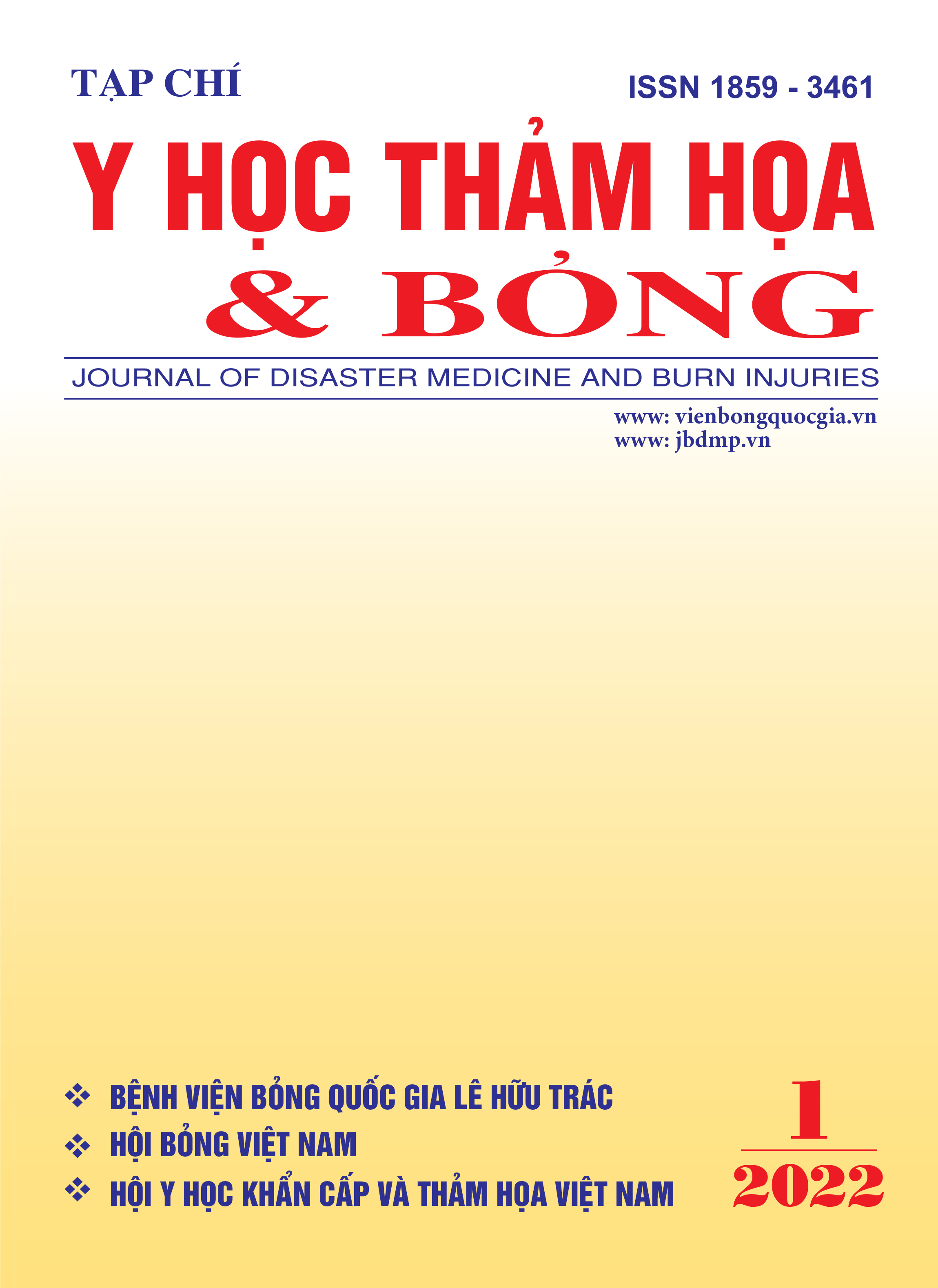Characteristics and outcomes of burn patients with health insurance at the National Burn Hospital
Main Article Content
Abstract
Objectives: To evaluate the prevalence, characteristics and outcomes of burn patients with health insurance.
Subjects and methods: Retrospective study was conducted on 15301 burn patients for 5 years (2016 - 2020) at the National Burn Hospital. Patients were divided into two groups with or without health insurance to be compared in terms of characteristics and treatment results.
Results: The percentage of burn patients with health insurance was 82.57%. The group of patients with health insurance had a lower proportion of men and adults, were hospitalized later, due to higher rate of wet heat. There was no statistically significant difference between the two groups in terms of living location, burn extent, combined injury. However, larger depth burn area, lower rate of inhalation injury, and higher combined morbidity rate were seen in the group with health insurance. The group of patients with health insurance had a statistically significant longer hospitalization (15 vs. 9 days; p < 0.01), and more on the cost of the treatment provided and lower mortality rate (2.79% vs. 5.21%; p < 0.001) but did not reaching independent level.
Conclusion: The percentage of burn patients with health insurance is relatively high and brings many benefits to the burn patients, and should be encouraged to increase this rate in the community.
Article Details
Keywords
Burns, Health insurance, treatment outcome
References
2. Nguyễn Thị Trúc Hương. (2016). Phân tích các yếu tố ảnh hưởng đến quyết định tham gia bảo hiểm y tế của hộ gia đình trên địa bàn huyện Thạnh Phú, tỉnh Bến Tre (Doctoral dissertation, Đại học Trà Vinh).
3. Dickieson, J., Arkus, V., & Wiertz, C. (2009). Factors that influence the purchase of organic food: A study of consumer behavior in the UK. Cass Business School, London.
4. Yamada, T., Chen, C. C., Yamada, T., Noguchi, H., & Miller, M. (2009). Private health insurance and hospitalization under Japanese national health insurance. The Open Economics Journal, 2, 61-70.
5. Yellaiah, J., & Ramakrishna, G. (2012). Socio-economic determinants of health insurance in India: the case of Hyderabad city. International Journal of Development and Sustainability, 1(2), 111-119.
6. Hulsebos, I. F., Collier, Z. J., Spera, L. J., Johnson, M. B., Hulsebos, E. M., Yenikomshian, H. A., & Gillenwater, J. (2021). Burn Patient Insurance Status Influences Hospital Discharge Disposition and Utilization of Post-Discharge Outpatient Care. Journal of Burn Care & Research. https://doi.org/10.1093/jbcr/irab124.
7. Keshri, V. R., & Jagnoor, J. (2022). Burns in India: a call for health policy action. The Lancet Public Health, 7(1), e8-e9.
8. Choi, J., CHOI, H. J., KANG, K. J., SEO, B. F., Shin, J., & Jung, S. N. (2018). Feature analysis of burn patients in Korea using national health insurance database. Journal of Korean Burn Society, 55-58.


